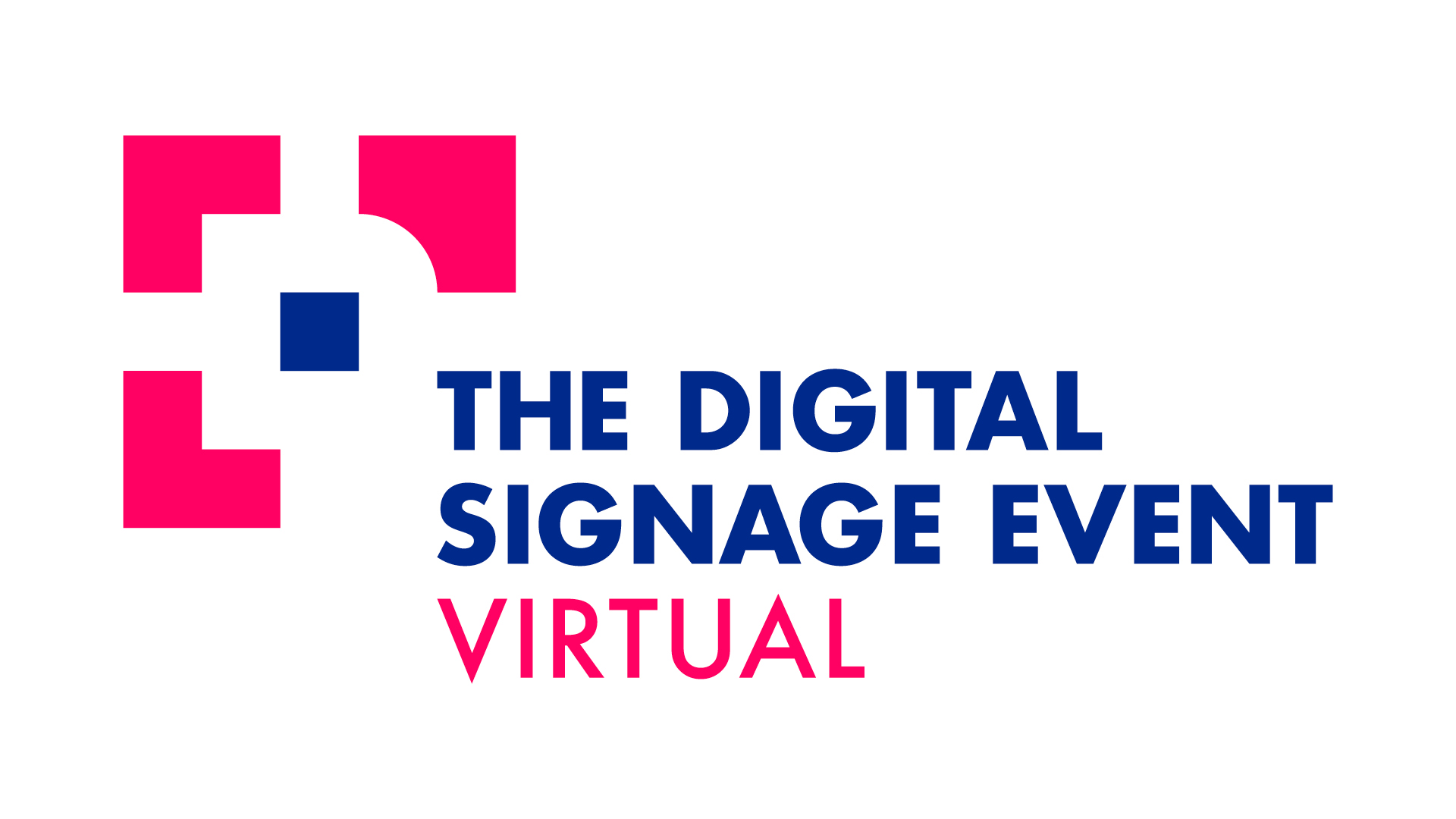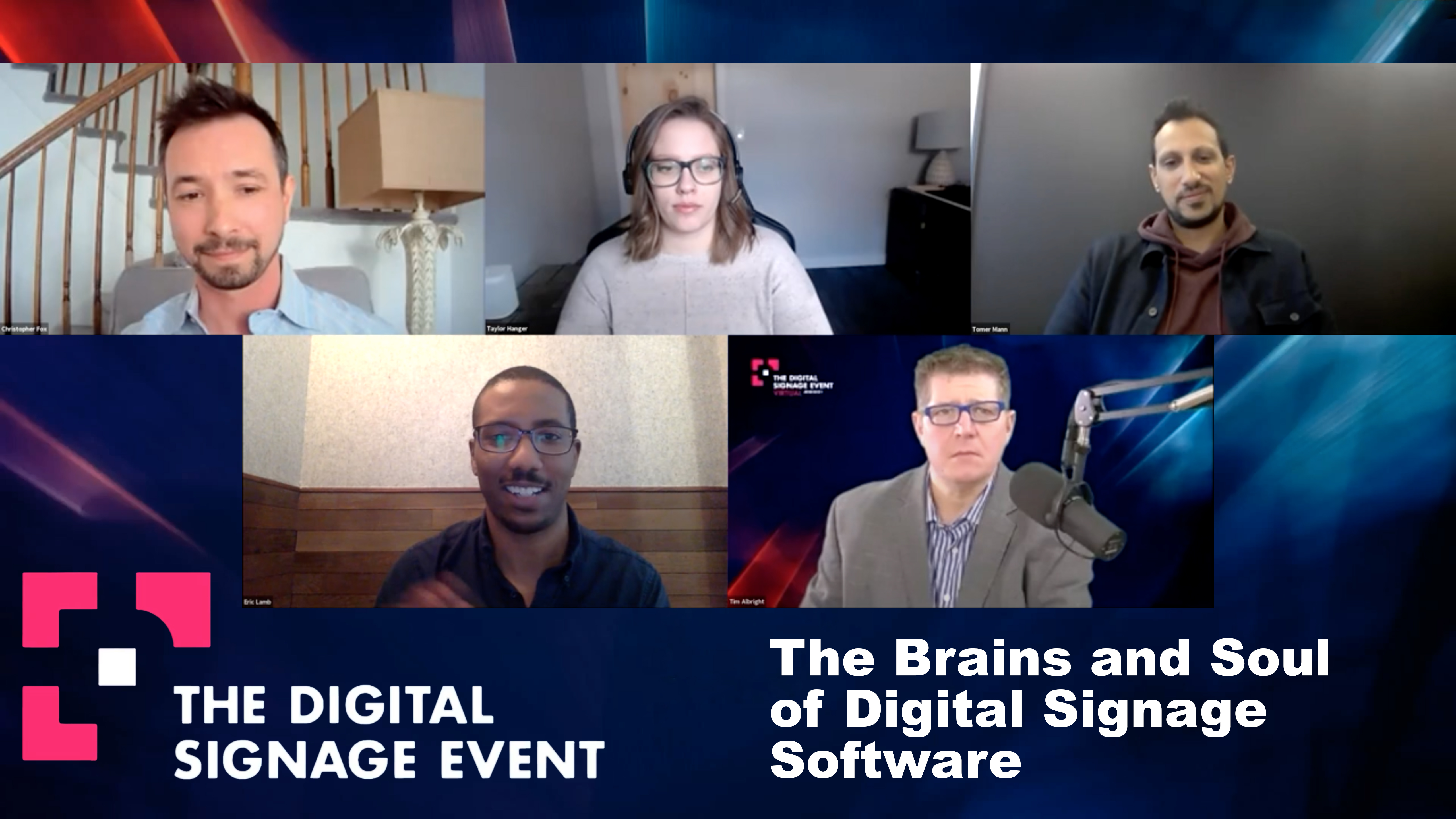It’s easy to think of digital signage simply in terms of displays. But when it comes to crafting an effective deployment, software should be top of mind from the very start.
On Thursday afternoon, The Digital Signage Event panel “The Brains and Soul of Digital Signage Software” brought together participants from all sides of the industry to discuss the state of signage software and where things are headed. Moderated by AVNation Media’s Tim Albright, the discussion featured Christopher Fox of Openeye Global, Taylor Hanger of Alpha Video, Eric Lamb of Vistar Media, and Tomer Mann of 22Miles. Here are some takeaways from the conversation.
Plan the Software from the Beginning

“The Brains and Soul of Digital Signage Software” is available on demand at thedigitalsignageevent.vfairs.com. Log in to watch this presentation and others.
“We’re usually the afterthought, even though we shouldn’t be,” said 22Miles’ Tomer Mann. “We should be the first piece of the puzzle, really.” Often, he said, system integrators or design firms will create a scope for the design, then examine which software will fulfill their needs. “I think if people start looking at the features they want, the widgets and applications and capabilities to support their solution, then the CMS should be the first piece.”
“The software should not be an afterthought because that’s the thing that you’re going to be using every day,” agreed Vistar’s Eric Lamb. “If you’re a signage operator putting up a network, what you want to do on the screens is primarily controlled by that software.” He said that people might see screens out in the world and think it looks simple, but the implementation process uncovers numerous possibilities that they might not have thought of. “If you just dive in and choose your hardware and content provider first but don’t think about how you’re going to put it all together, that’s very difficult,” he said.
Begin with Storyboarding
So how should you start this first step of choosing your software? Mann urges stakeholders to allocate significant time to the initial storyboarding. “The beginning is where it could get bumpy,” he said, but if you put in the time in this phase, “afterward it should only be a few seconds worth of updating—that’s how fast and automated it should be.”
“The front end of digital signage is the hardest part, and that is storyboarding and finding out what the client is truly going for,” said Alpha Video’s Taylor Hanger. “My biggest recommendation is to do split breakout groups: get smaller amounts of people together, get their storyboards created, and combine it—see what that looks like in the end.” For a deployment with 10 endpoints, Hanger said the process could be completed in a week: “Some intensive conversations, and we have the first six months planned out for what they’re doing.” For bigger projects, like a casino with 700 endpoints, she said the process could take three years.
Set Expectations
Panelists pointed out that it’s key to explain to clients that even with a well-thought-out design, they will likely discover things after launch that they’d like to tweak—different kinds of messaging, for example—and that they’ll need someone to handle it. “Having those expectations set ahead of time, and knowing that it’s a very fluid process going forward that needs to be managed, and understanding who is actually going to be managing these things—that mitigates a lot of these problems,” said Christopher Fox of Openeye Global. “If you don’t do that, then you have a lot of challenges after deployment.”
For more coverage of The Digital Signage Event, visit our hub page.

